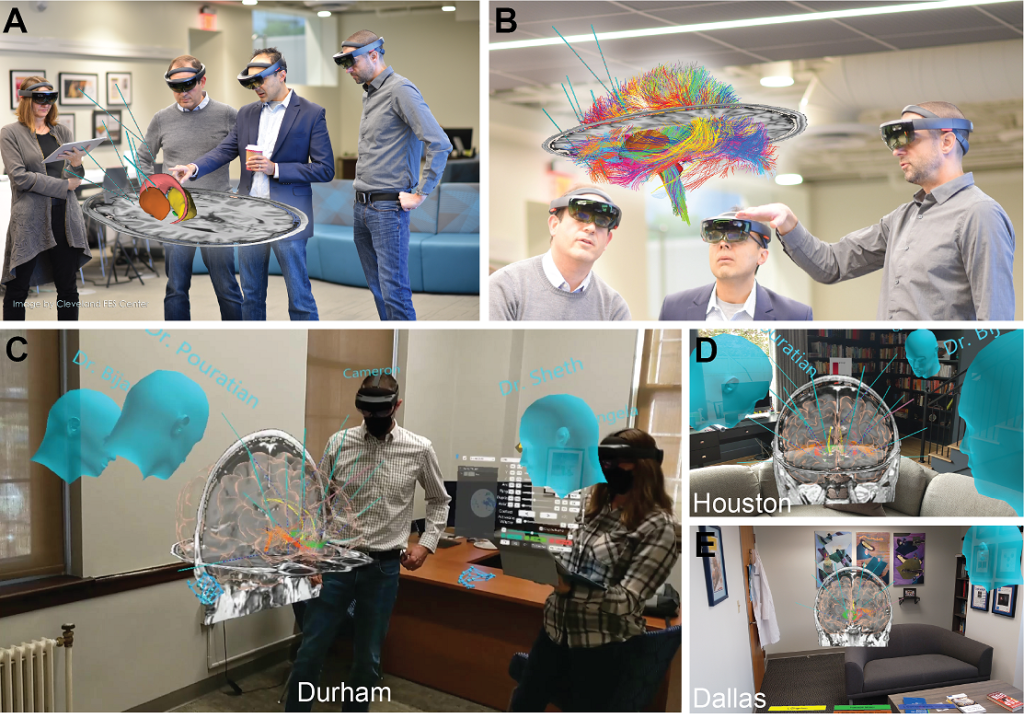Extended Reality
Extended Reality (XR), which includes virtual reality (VR), augmented reality (AR), and spatial computing, is revolutionizing healthcare by providing immersive and interactive environments for medical research and clinical applications. At Duke University’s Center for Computational and Digital Health Innovation, our researchers are leveraging XR to enhance the understanding and treatment of complex medical conditions. This technology offers unique clarity in visualizing the human body, allowing for more precise and effective medical interventions.
Advancing Neurosurgical Precision
Neurosurgical procedures, particularly those involving deep brain stimulation (DBS), require highly accurate visualization and planning. At the Center, a team led by Prof. Cameron McIntyre has developed advanced holographic visualization techniques to reconstruct axonal pathways in the brain. This method, known as ‘Connectomic DBS,’ couples patient-specific DBS modeling with high-resolution MRI data. It provides clinicians with detailed insights, helping to improve the precision of electrode implantation in the brain. This technology is critical in treating neurological conditions like Parkinson’s disease and depression, enhancing the effectiveness of these interventions.
Enhancing Surgical Navigation with Augmented Reality
The use of AR in surgical settings is another groundbreaking application at our Center. Research led by Prof. Maria Gorlatova includes the development of ‘Neurolens,’ an AR tool designed to track surgical instruments in real-time during neurosurgery. This tool overlays real-time imaging data onto the surgeon’s field of view, facilitating precise navigation and improving surgical outcomes. Beyond the operating room, our work in AR extends to applications in various industries, including gaming, retail, and education, demonstrating the versatility and potential of this technology in different contexts

Making Cardiovascular Care More Intuitive
In the realm of cardiovascular care, XR technologies are being used to create highly detailed simulations of blood flow and disease progression. Prof. Amanda Randles and team have developed Harvis and HarVI, platforms that integrate VR and machine learning to facilitate detailed exploration and surgical planning. HarVI enables the simulation of post-intervention blood flow changes, while Harvis provides an intuitive interface for interacting with patient- specific anatomy. These tools allow for developing personalized treatment strategies, and laying groundwork to enable clinicians to better understand and manage cardiovascular conditions.
Conclusion
The integration of Extended Reality technologies at the Center for Computational and Digital Health Innovation is transforming healthcare by providing immersive tools that enhance both research and clinical practice. By improving neurosurgical precision, enhancing surgical navigation, and revolutionizing cardiovascular care, XR technologies are paving the way for more personalized, precise, and effective healthcare solutions.

